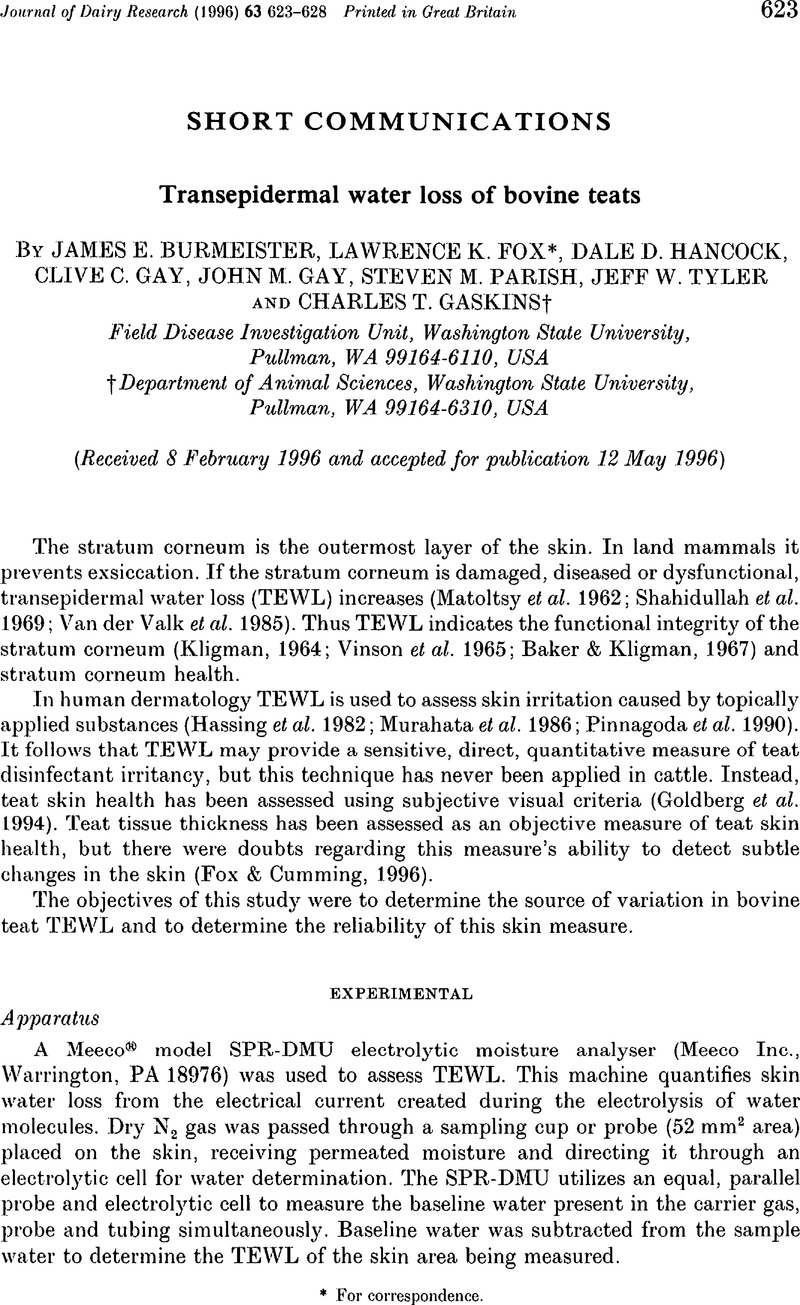Crossref Citations
This article has been cited by the following publications. This list is generated based on data provided by Crossref.
Burmeister, J.E.
Fox, L.K.
Hillers, J.K.
and
Hancock, D.D.
1998.
Effects of Premilking and Postmilking Teat Disinfectants on Teat Skin Condition.
Journal of Dairy Science,
Vol. 81,
Issue. 7,
p.
1910.
Burmeister, J.E.
Fox, L.K.
Hillers, J.K.
and
Hancock, D.D.
1998.
A Comparison of Two Methods of Evaluation of Teat Skin Pathology.
Journal of Dairy Science,
Vol. 81,
Issue. 7,
p.
1904.



